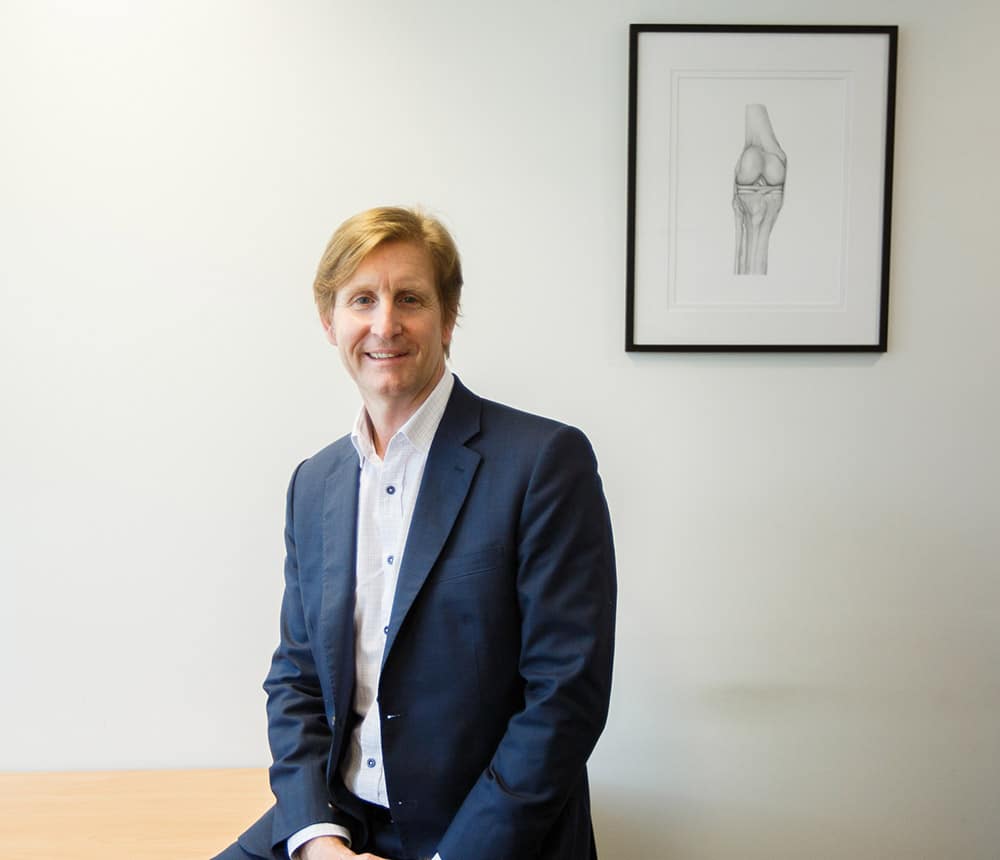Paediatric ACL reconstruction
Paediatric ACL (anterior cruciate ligament) reconstruction
What is it?
The ACL is a ligament that joins the femur to the tibia and stabilizes the knee particularly when playing sports and when pivoting on the knee such as doing side step movements. If it is ruptured the knee can feel unstable and give way which can also result in more damage to the knee such as tears of the menisci.
What’s involved?
As the ACL doesn’t have the ability to repair itself surgical reconstruction is generally recommended. This involves replacing the ruptured ACL with a graft. It maybe necessary to repair a torn meniscus at the same time.The type of graft is dependent on the patient’s age. Generally hamstring is used however in very young patient’s who are pre pubescent it may be necessary to use a strip of tensor fascia lata.
It is extremely important that ACL reconstruction in the paediatric population is done in a manner that respects the growth plate. Injury to the growth plate may cause growth arrest and subsequent progressive deformity of the knee as the child grows.Consequently the surgical technique needs to be modified ie the traditional technique used for adult patients may not be suitable.
Post-Operative Information
The patient is required to use crutches for partial weight bearing for the initial 2-3 weeks and may require a knee brace for 6 weeks. Physiotherapy to rehabilitate the knee is necessary for many months afterwards. Children should not return to sports for at least one year dependent on subsequent post operative clinical reviews. Occasional Xrays are performed to assess the growth plate particularly in the younger child.
Precautions
- Do not return to running until instructed to by treating surgeon.

A child’s ACL tear – It’s not just another ACL
Because of the potential damage that can occur to the growth plates (physes) anterior cruciate reconstruction in paediatric patients needs to be approached in a different light to adult reconstruction cases.
Paediatric ACL reconstructions require significant technical expertise in order to minimize the risk of damaging growth plates and preserving menisci. Surgeons with paediatric training are best placed to provide this.
Traditionally children with ACL ruptures have been instructed to avoid sports, wear a supportive brace and wait until they are closer to skeletal maturity before proceeding with reconstruction. Non operative management like this is still an option however studies have shown that delay in surgical repair of the ACL, greater than 12 weeks, increases the risk of meniscal tears and secondary chondral surface damage due to persistent knee instability. In reality, it is difficult for a child to be brace and activity compliant despite the doctor’s instructions.
Consequently it has become more common for surgeons to recommend early intervention. Many methods have been described for paediatric patients. The type of method chosen primarily depends on how much growth remaining the child has ie their Tanner stage.
Adult like reconstruction techniques can be utilised, ie transphyseal techniques, however care must be taken to minimize the cross sectional area of physis that is violated when making the femoral and tibial tunnels to pass the graft. The tunnels need to be as close to right angles to the physis as possible to minimise the cross sectional area affected. Studies have shown that up to 7% of the cross sectional area of the growth plate can be drilled without causing growth disturbance. Furthermore the fixation used to secure the graft must not potentially tether the physis therefore traditional adult like interference fit screws are generally avoided. Alternatively all epiphyseal and extra articular reconstruction techniques have also been described to avoid the graft crossing the physis thus minimising growth arrest however these techniques are technically more challenging.
In addition to considerations regard ACL reconstruction techniques the surgeon must also have expertise and a low threshold for meniscal repair techniques as debridement of the meniscus, particularly the lateral meniscus, in a child, results in rapid chondral wear and post traumatic arthritis.
In order to approach treatment of a child with an ACL tear the surgeon must have thorough knowledge of all these issues and also experience with the variety of reconstruction techniques as described in order to offer their patient the most appropriate surgery for their age.
